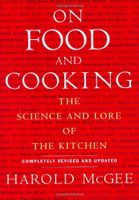Advertisement
Fish Eggs
Appears in
By Harold McGee
Published 2004
Of all foods from the waters, the most expensive and luxurious are fish eggs. Caviar, the salted roe of the sturgeon, is the animal kingdom’s truffle: a remarkable food that has become increasingly rare as civilization has encroached on its wild source. Happily, sturgeon farms are now producing good caviar, and a variety of other fish eggs are available as affordable and interesting alternatives.
The ovaries or “roes” of fish accumulate vast numbers of eggs in preparation for spawning: as many as 20,000 in a single salmon, and several million in a sturgeon, carp, or shad. Because fish eggs contain all the nutrients that one cell will need to grow into a hatchling, they’re often a more concentrated form of nourishment than the fish itself, with more fat (between 10 and 20% in sturgeon and salmon caviars) and large quantities of savory building-block amino acids and nucleic acids. They often contain attractive pigments, sometimes bright pink or yellow carotenoids, sometimes camouflaging brown-black melanins.


